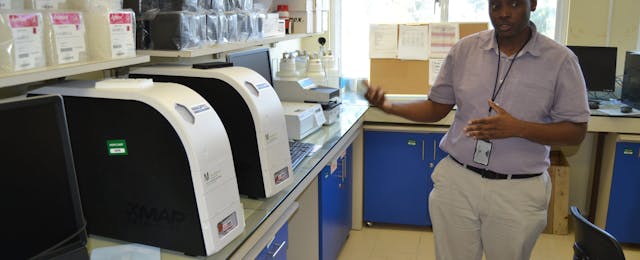

When then Director of the U.S. Centers for Disease Control and Prevention, Dr. Tom Frieden, returned from West Africa during the deadly Ebola outbreak of 2014, he issued a dire warning: “The window of opportunity to stop Ebola from spreading widely throughout Africa and becoming a global threat for years to come is closing.”
Thankfully, the United States and global partners ultimately mobilized the right combination of resources and expertise to stop the virus. This coordinated response averted a global crisis, but at the cost of over 11,300 lives in what was the largest outbreak of Ebola in history.
Now, Ebola is back. A new outbreak in the Democratic Republic of Congo (DRC) has swelled to nearly 60 cases and left 27 dead as of this week. Worse still, a confirmed case has reached Mbandaka, a densely populated port city on the Congo River where 1.2 million people live. Mbandaka is 250 miles away from the village where the original Ebola case in this outbreak was identified, underscoring how quickly this virus can spread if left unchecked.
The current Administration has asked Congress to cut, not strengthen, funding that could be used to keep countries – and all people of the world – safe from deadly disease outbreaks like the one happening now in DRC. Through a rescissions package currently under consideration, the President requested to zero out $252 million in emergency response funding that was vital to ending the 2014 Ebola outbreak in West Africa.
Congress must reject these short-sighted cuts. As horrific as the 2014 Ebola outbreak was, its legacy extended far beyond the immediate loss of life. The outbreak crippled fragile national health systems in Sierra Leone, Liberia, and Guinea and left hundreds of thousands of children vulnerable to deadly and debilitating infectious diseases, long after Ebola was stopped.
Before the outbreak in Liberia, for example, 73% of children were fully immunized against a range of preventable diseases like measles, whooping cough, and tetanus. The Ebola crisis reduced this coverage by half, leaving less than 36% of children in the most severely affected regions protected. The sharp rise in unvaccinated children directly contributed to measles outbreaks in Liberia and Guinea in 2015, before the WHO and the Measles & Rubella Initiative (M&RI) could launch nationwide vaccination campaigns.
Compounding the impact of debilitated national health systems, the West Africa Ebola outbreak discouraged millions from seeking treatment for malaria, not only due to doubt in these systems but because both diseases start with fever and flu-like symptoms. This distrust and fear escalated malaria deaths and incidence, as upwards of 5 million malaria cases went untreated in Liberia, Guinea, and Sierra Leone. Because the parasite plagues the region, it is estimated that the excess number of individuals who died from malaria far surpassed that of Ebola in countries like Guinea.
Outbreaks like Ebola have lasting repercussions that cripple countries long after the diseases are stopped. We learned valuable lessons from the 2014 crises about coordination, emergency funding, and the need for an early response. The U.S., the UN and the rest of the international community must apply these lessons learned to make sure Ebola is fully contained in DRC. Members of Congress should reject the Administration’s rescissions package to ensure we have the correct tools to stop this outbreak.